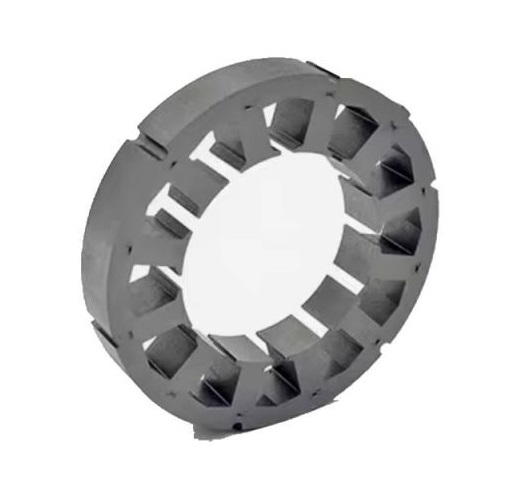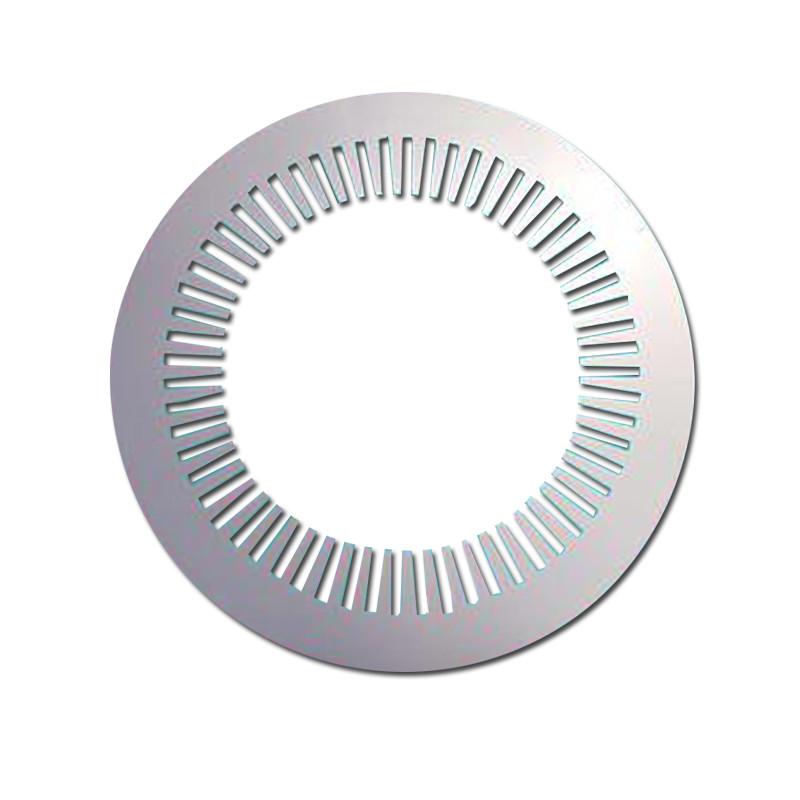Effective solutions to common problems with high-voltage stator laminations are essential for ensuring the reliability and longevity of electric motors and generators. Stator laminations, which are critical components in these machines, can face various issues that affect performance and efficiency. This article explores the common problems associated with high-voltage stator laminations, their causes, and effective solutions to mitigate these challenges.
Understanding High-Voltage Stator Laminations
High-voltage stator laminations are thin sheets of electrical steel used in the construction of stators for electric motors and generators. These laminations are stacked together to form the core of the stator, which is essential for generating magnetic fields. The use of laminated cores reduces eddy current losses, improving overall efficiency. However, several issues can arise during manufacturing, installation, or operation that can compromise their effectiveness.

Key Features of Stator Laminations
Material Composition: Typically made from silicon steel to enhance magnetic properties and reduce losses.
Thickness: Laminations are manufactured in various thicknesses to optimize performance based on specific applications.
Insulation Coating: A thin layer of insulation is often applied to each lamination to further reduce eddy currents.

Common Problems with High-Voltage Stator Laminations
1. Insulation Breakdown
Cause: Insulation breakdown is one of the most critical issues affecting high-voltage stator laminations. This problem can occur due to excessive heat, moisture ingress, or manufacturing defects.
Solution: Regular maintenance and monitoring of operating conditions can help prevent insulation breakdown. Implementing voltage endurance tests can assess insulation quality over time. If insulation breakdown is detected, immediate inspection and replacement of affected laminations are necessary to avoid further damage.
2. Eddy Current Losses
Cause: Eddy currents are induced currents that flow within the laminations when exposed to alternating magnetic fields. These currents generate heat and lead to energy losses, reducing the overall efficiency of the motor or generator.
Solution: Using thinner laminations can significantly reduce eddy current losses. Additionally, employing high-quality electrical steel with better magnetic properties can enhance performance. Regular monitoring of temperature during operation can also help identify excessive losses early.
3. Mechanical Deformation
Cause: Mechanical deformation of stator laminations can occur due to improper handling during installation or operational stresses such as vibrations and thermal expansion.
Solution: Proper handling techniques should be employed during installation to prevent physical damage. Additionally, ensuring that the motor or generator is mounted securely can minimize vibrations that lead to deformation. Regular inspections should be conducted to identify any signs of mechanical stress on the laminations.
4. Corrosion
Cause: Exposure to moisture and corrosive environments can lead to rust formation on stator laminations, compromising their electrical properties.
Solution: Applying protective coatings during manufacturing can help prevent corrosion. In environments where humidity is a concern, implementing environmental controls such as dehumidifiers may be beneficial. Regular inspections should be conducted to detect early signs of corrosion.

Effective Solutions Through Testing and Maintenance
Voltage Endurance Testing
Voltage endurance testing is a vital diagnostic tool used to assess the quality of insulation in stator coils and bars. By applying a significantly higher voltage than normal operating conditions for a specified duration, manufacturers can identify potential insulation failures before they occur in service.
Procedure: For example, a coil rated at 13.8 kV may undergo testing at 30 kV for 400 hours while maintained at elevated temperatures.
Benefits: This testing helps manufacturers discover issues with coil quality early on, allowing them to address problems before installation.
Partial Discharge Monitoring
Partial discharge (PD) is a phenomenon that occurs due to localized electrical stress within insulating materials. PD can lead to insulation degradation over time if not addressed promptly.
Detection Techniques: Utilizing advanced monitoring techniques such as ultrasonic detection or electromagnetic sensors can help identify PD activity within high-voltage equipment.
Mitigation Strategies: Implementing regular PD measurements as part of a maintenance program allows operators to track insulation health and take corrective actions when necessary.

Conclusion
High-voltage stator laminations play a crucial role in the performance and reliability of electric motors and generators. Addressing common problems such as insulation breakdown, eddy current losses, mechanical deformation, corrosion is essential for maintaining operational efficiency.
By implementing effective solutions such as voltage endurance testing and partial discharge monitoring, manufacturers and operators can significantly enhance the longevity and reliability of their equipment.
Longnai Intelligent Co., Ltd., specializing in motor sample research and manufacturing, recognizes the importance of addressing these challenges through innovative solutions tailored to meet industry needs. By focusing on quality control and advanced testing methods, we aim to provide our clients with reliable technologies that ensure optimal performance in high-voltage applications.
Understanding the Benefits of High Voltage Stator Lamination in Industrial Applications

